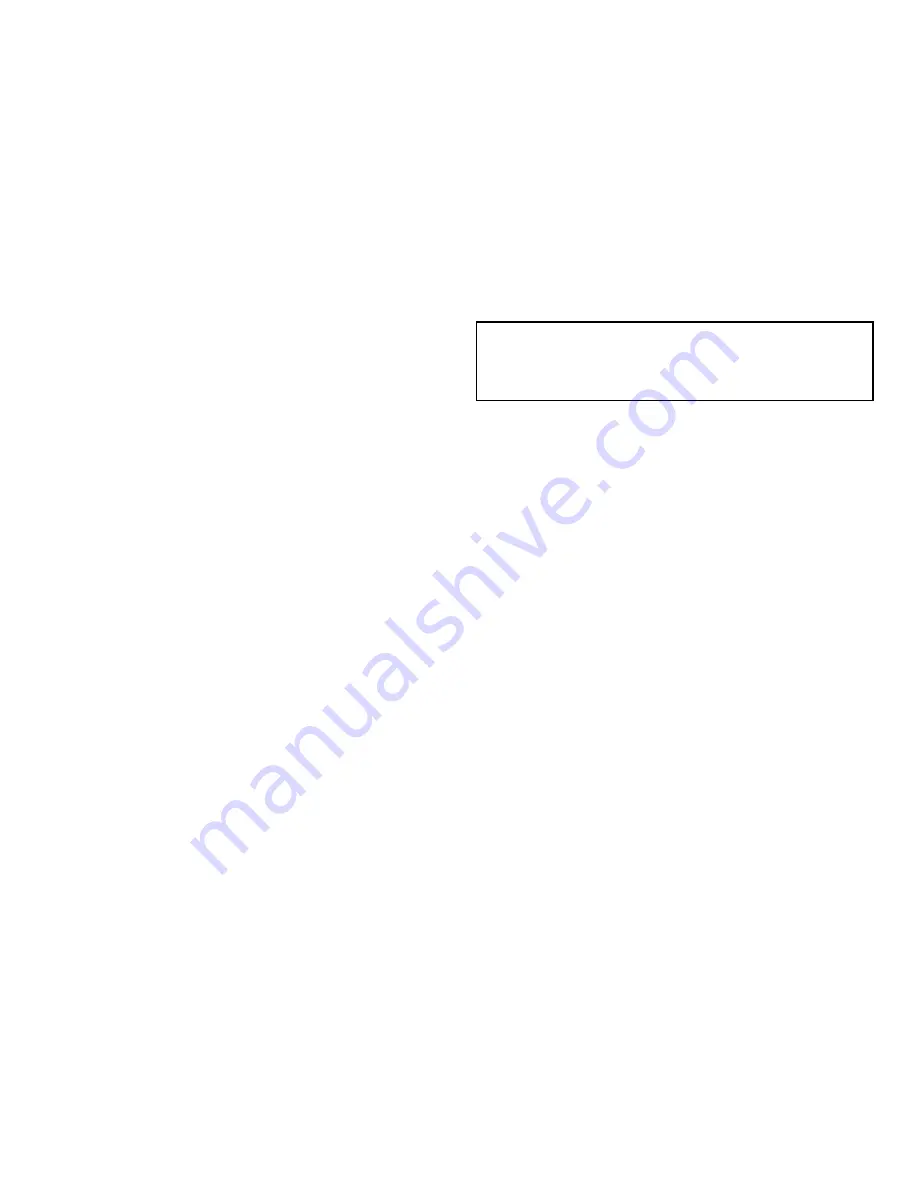
14
Replacing the fire pot
1.
Align the slot at the front part of the fire pot with the burner tube
sleeve and gently lower the fire pot into the bottom half of the heat
exchanger;
2.
Holding the fire pot near the perimeter, gently push the fire pot all
the way into the bottom half of the heat exchanger until it is properly
seated;
3.
Thoroughly wet the gasket with water using a spray pump bottle,
position the tabs over the studs, and push the gasket upward
against the sealing flange of the upper half of the heat exchanger;
4.
Install the brass nuts on the studs by engaging only 2 or 3 threads;
5.
Position the bottom half of the heat exchanger underneath the
upper half and align the bottom half so that the slots in the bolting
tabs engage the stainless steel studs. There is no further need to
hold onto the bottom half as it will now be suspended on the stud
nuts;
6.
Push upward on the housing and thread the nuts finger-tight as far
as possible;
7.
Intermittently tighten the brass nuts with a wrench in a sequence
that will pull the heat exchanger halves together evenly. Tighten all
nuts to 90 inch-lbs torque once and then alternately re-tighten all
nuts again to 100 inch-lb.
THE RE-TIGHTENING SEQUENCE IS
ABSOLUTELY NECESSARY TO ENSURE A TIGHT JOINT
;
8.
Re-assemble the front panel, breach plate, Limit Control and burner
in reverse sequence to their removal;
9.
Follow the instructions for starting the burner for the first time to
cure the fire pot and perform combustion checks. See Section 3.3-
.
4.2.3- Drawer assembly
Remove the drawer assembly. Clean all foreign matter from the
retention head and electrodes. If a Beckett AFG burner has been
installed, the burner will have to be removed to check the retention head.
4.2.4- Nozzle
Replace the nozzle with the one specified in Table 4.
4.2.5- Oil filters
Tank filter
The tank filter should be replaced as required.
Secondary filter
The 10 (or less) micron filter cartridges should be replaced annually.
4.2.6- Air filters
Air filters are the disposable type. They should be replaced at least once
a year. Dusty conditions, presence of animal hair etc. may require much
more frequent filter changes. Dirty filters will impact furnace efficiency
and increase oil consumption.
4.2.7- Motor lubrication
Do NOT lubricate the oil burner motor or the direct drive blower motor
as they are permanently lubricated.
4.2.8- CAS-2B combustion air kit (chimney venting)
If used, check the CAS-2B combustion air kit for proper operation. Check
to see that the inlet screen is not plugged. Block the air inlet completely
and ensure that a zero smoke reading results. If a zero smoke reading
is not obtained, set up the burner as indicated in Section 3.3-.
Gradually block off the intake. The CO
2
should increase to a maximum
of 0.5 percentage points at the fully blocked condition. If not, check that
the VRV gate is pivoting freely and that the pivot rod is in a horizontal
position. Also, check that the counterweight has been properly adjusted
in accordance with CAS-2B installation instructions.
4.2.9- Blocked Vent Shut-Off (BVSO) Cleaning
For continued safe operation, the Blocked Vent Shut-Off System (BVSO)
is required to be inspected and maintained annually by a qualified agency.
1.
Disconnect the power to the appliance.
2.
Remove the two screws holding on the BVSO assembly cover.
3.
Remove the cover.
4.
Remove the two screws holding the thermal switch to the assembly
base.
6.
Without removing the electrical wires, remove the thermal switch and
remove any build-up from the thermal switch surface.
CAUTION
Do not dent or scratch the surface of the thermal
switch. If the thermal switch is damaged,
replacement is required.
6.
Clear and remove any build-up or obstruction inside the heat transfer
tube.
7.
Re-mount the thermal switch to the assembly base.
8.
Re-attach the assembly cover with the screws removed in step 2.
9.
Re-establish power to the appliance.






































